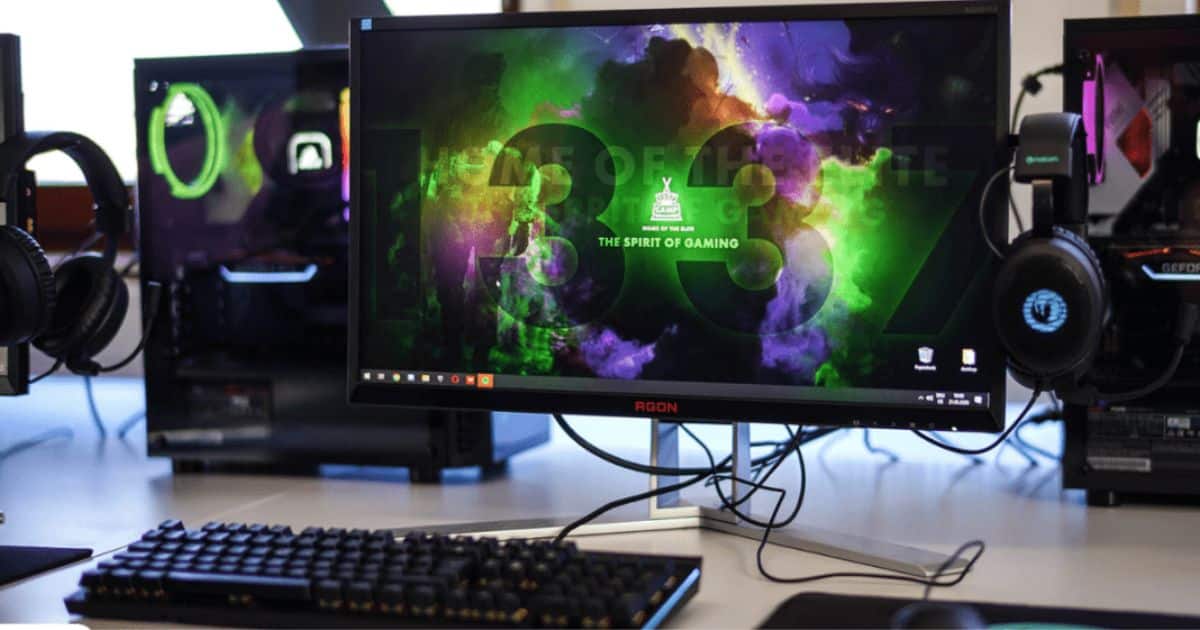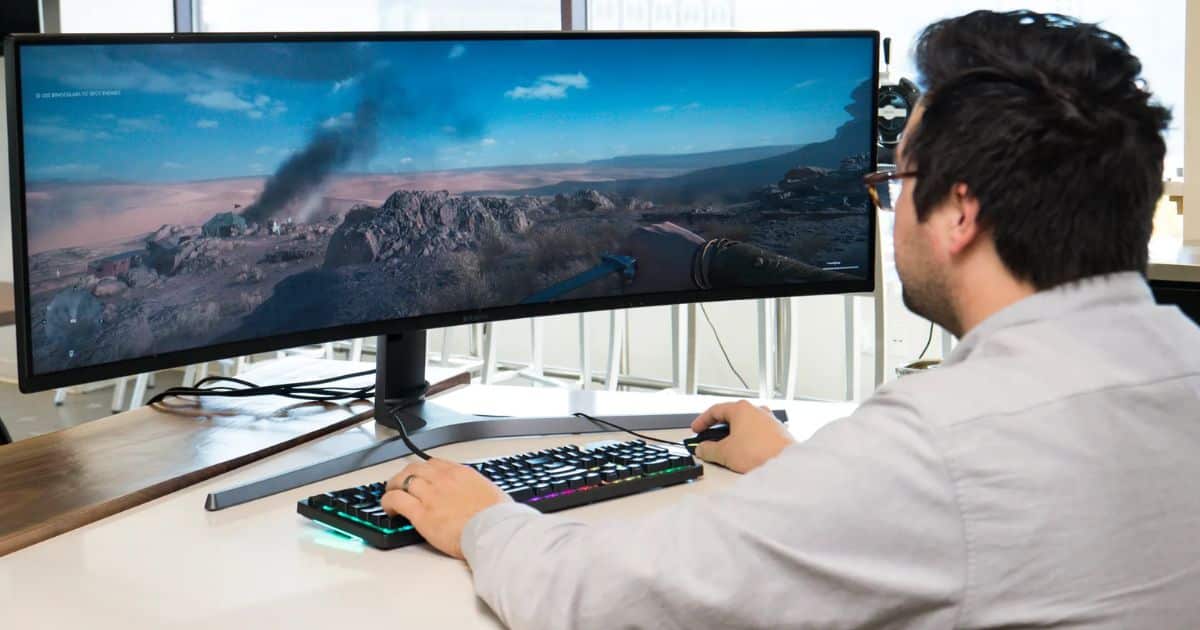In an era where technology plays an integral role in our daily lives, the question arises: Can a gaming monitor serve as a suitable replacement for a regular monitor? This article aims to provide an unbiased, informative, and analytical exploration of the topic. By delving into the benefits, factors to consider, and tips for choosing the right gaming monitor for regular use, we aim to assist individuals seeking an enhanced productivity and immersive visual experience in their digital endeavors.
Key Takeaways
- Gaming monitors provide smoother and more responsive visuals, minimal motion blur, and input lag.
- Customizable settings on gaming monitors allow for optimal display and enhanced user experience for everyday tasks.
- Gaming monitors are suitable for both gamers and non-gamers seeking an enhanced computing experience.
- Factors to consider for compatibility include resolution, refresh rates, connectivity options, and functionality and integration with other devices or components.
Benefits of Using a Gaming Monitor for Everyday Tasks
One of the main benefits of using a gaming monitor for everyday tasks is that it offers smoother and more responsive visuals, enhancing the overall user experience. Compared to regular monitors, gaming monitors are designed with features that prioritize speed and performance, making them ideal for gaming. However, these features can also greatly benefit everyday tasks such as browsing the internet, watching videos, or working with graphic-intensive software. With a higher refresh rate and lower response time, gaming monitors can display content with minimal motion blur and input lag, resulting in a more fluid and immersive viewing experience. Additionally, gaming monitors often come with customizable settings, allowing users to optimize the display based on their specific needs and preferences. This versatility makes gaming monitors a suitable choice for both gamers and non-gamers looking to enhance their everyday computing experience.
Important Factors to Consider for Compatibility
When considering compatibility, it is crucial to identify and assess the key factors that may impact the functionality and integration of different devices or components. In the context of using a gaming monitor as a regular monitor, there are several factors to consider. These factors include resolution, refresh rate, and connectivity options.
Here is a table that highlights these factors and their importance:
| Factor | Description | Importance |
|---|---|---|
| Resolution | Determines the clarity and sharpness of the image | Higher resolution provides a better viewing experience |
| Refresh Rate | The number of times the image refreshes per second | Higher refresh rates result in smoother motion |
| Connectivity | Types of ports available for connecting devices | Ensures compatibility with other devices and components |
Adjusting Settings for Regular Use on a Gaming Monitor

To optimize regular use on a gaming monitor, users can adjust settings such as brightness and color temperature to ensure a comfortable viewing experience. Additionally, adjusting color and resolution settings for regular use on a gaming monitor can enhance image quality and clarity. Another important aspect to consider is optimizing the refresh rate for everyday tasks. This can help reduce eye strain and ensure smooth scrolling and cursor movement. Other settings that can be adjusted include contrast, sharpness, and gamma. By fine-tuning these settings, users can personalize their viewing experience and optimize their gaming monitor for regular use. Achieving the right combination of settings will provide a more enjoyable and immersive visual experience, whether for gaming or day-to-day tasks.
Enhancing Productivity With Gaming Monitor Features
The article discusses the various ways in which gaming monitor features can be utilized to enhance productivity. Many people wonder if there is a difference in performance between a gaming monitor and a regular monitor. While both types of monitors serve the purpose of displaying images and videos, gaming monitors are specifically designed to provide a better gaming experience with features such as high refresh rates, low response times, and adaptive sync technologies. These features can also be beneficial for productivity tasks such as video editing, graphic design, and programming, where smooth motion and accurate color representation are important. However, there are potential drawbacks to using a gaming monitor for everyday tasks. These include higher costs, excessive brightness, and limited connectivity options. It is important to consider these factors before deciding to use a gaming monitor for non-gaming activities.
| Pros | Cons |
|---|---|
| High refresh rates | Higher cost |
| Low response times | Excessive brightness |
| Adaptive sync technologies | Limited connectivity options |
| Accurate color representation | |
| Smooth motion |
Tips for Choosing the Right Gaming Monitor for Regular Use
An important factor to consider when selecting a gaming monitor for regular use is the display size, as it can greatly impact the overall viewing experience. A larger display size can provide a more immersive and enjoyable experience, especially when watching movies or working on tasks that require a lot of screen real estate. However, it’s important to note that a larger display may also require more space and can be more expensive.
Here are some pros and cons of using a gaming monitor for regular use:
- Pros:
- High refresh rate for smoother motion and reduced eye strain.
- Enhanced color accuracy and contrast for better visual quality.
- Adaptive sync technology for eliminating screen tearing.
- Wider viewing angles for better visibility from different positions.
- Advanced features like HDR support for more vibrant colors.
- Cons:
- Higher cost compared to regular monitors.
- Larger physical size may not be suitable for all workspaces.
- May require more power consumption.
- Some gaming-focused features may not be relevant for regular use.
- Limited availability of certain sizes or models.
To optimize a gaming monitor for regular use, consider the following tips:
- Adjust display settings for optimal viewing experience, such as brightness, contrast, and color temperature.
- Calibrate the monitor to ensure accurate colors and contrast.
- Use a suitable resolution for your needs and ensure the monitor is set to its native resolution.
- Adjust the refresh rate to match the content being displayed.
- Consider using blue light filters or adjusting the color temperature to reduce eye strain during extended use.
Conclusion
In conclusion, using a gaming monitor for regular tasks offers several benefits such as enhanced visual quality and faster response times. However, it is important to consider compatibility factors and adjust settings accordingly. Gaming monitor features can also contribute to increased productivity. When choosing a gaming monitor for regular use, it is crucial to carefully assess your needs and preferences. By doing so, you can ensure a seamless and enjoyable experience while performing everyday tasks. Remember, the right gaming monitor can greatly enhance your overall computing experience.

Brook over 3 years of professional gaming, esports coaching, and gaming hardware reviews to provide insightful expertise across PC, console, and mobile gaming.










